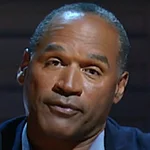|
|
I’m not a glass-is-half-full kind of person. My outlook, and even my comedy routines, betray a “Chicken Little” viewpoint, hence a Village Voice reporter once likening me to “A Canadian Woody Allen.”
Yet when it comes to judging the periodicals I’ve subscribed to for decades, I typically find something positive even when they disappoint and offend. I was outraged to learn that Gerard Baker, the British-born editor of the Wall Street Journal, counts as his mates a despicable slum landlord and unscrupulous condo peddler, but the newspaper still occasionally produces a qualitative investigative piece — like this — that warrants its nearly $200 subscription price.
Yet, hard as I tried, I couldn’t muster any reason to renew Fortune magazine for $60 when my subscription recently expired. The last Fortune article that wowed me was a two-part series on the Sony hack by Peter Elkind, published more than two years ago. Elkind has long since bailed from the business magazine. Erin Griffith was the only reporter whose work I routinely read, not because she exuded any particular brilliance but refreshingly was one of the few technology writers who didn’t drink the communal Silicon Valley Soylent. I took it as a sign that Griffith’s farewell column appeared in my last subscription issue.
Until the mid-1990s, Fortune was an oversized magazine full of economic and finance articles that appealed primarily to academics and policy wonks. Dated issues curiously adorned the waiting room tables of doctors and dentists. In 1995, former Wall Street Journal reporter John Huey was named managing editor, and he quickly transformed the magazine into a venue for great storytelling and feature writing. For a brief time, Fortune became the Camelot of business journalism.
The magazine attracted many of the nation’s best financial reporters, including Elkind, Carol Loomis, Bethany McLean, Allan Sloan, James Bandler, Roger Parloff, and deft editors such as Hank Gilman and Joe Nocera. In 2012, I published a blog post highlighting some of Fortune’s impressive work the previous 12 months, entitled “Some Content Worth Paying For.” All the reporters whose work I featured are no longer with the magazine.
Fortune was the only publication I ever dealt with in PR that did let the facts get in the way of a good story. A reporter with the magazine was once preparing an article that put one of my clients in a damaging light, but we had considerable evidence showing her line of questioning betrayed a strong negative bias and a frightening ignorance about how the industry functioned. We appealed only to the magazine’s ethics and integrity and never threatened to sue. Fortune’s editors considered our arguments and killed the story.
Even in its heyday, Fortune had its faults. There were multiple incidents of plagiarism, but the magazine handled them with integrity and class (one of the plagiarized stories was about a client, so I have first-hand knowledge how the matter was handled). The magazine for years lionized former Hewlett-Packard CEO Carly Fiorina, but they ultimately took her down in what I still regard as the best piece of expository journalism ever published. Fiorina was forced out shortly thereafter.
Fortune was hurt by the humility of its best reporters. Although the public perception of journalists are the smug, self-promoting reporters you see at White House press briefings and the Sunday morning political shows, the best reporters are insecure and don’t perform well in the limelight. This became a dangerous trait in the internet age, as journalists increasingly became focused on branding themselves and generating scoops and clicks, rather than gumshoe reporting, became the industry’s benchmark of excellence.
Fortune began its precipitous slide in 2011 when Time Warner, then its parent company, brought on Laura Lang, a digital marketing and advertising executive, to oversee TW’s stable of magazines. Lang, in turn, brought in a bunch of consultants from Bain & Co. After reading an interview Lang gave the New York Times and Bain’s white paper on the future of media, I correctly questioned Lang’s and Bain’s understanding of journalism. Lang was ousted after just a year on the job, but she still received nearly $16 million in compensation. It boggles the mind the quantity and quality of journalists one could attract with that kind of money.
Time Warner spun off its magazine division in 2014 as Time Inc. and saddled the business with crushing debt. The Meredith Corp., a Midwest-based publisher of lifestyle magazines, this week announced that it would acquire the business for $3 billion in cash, financed in part by the Koch brothers, billionaires who are known for bankrolling conservative political causes. There have been multiple reports that Meredith didn’t want Fortune included in the transaction. Questioning Fortune’s value is one of the rare instances the Koch Brothers, and their nemesis, Elon Musk, have common ground.
Fortune still has one world-class journalist remaining. His name is Shawn Tully, and he’s been with the magazine for more than three decades, save for a stint at CNBC. Tully, who holds an M.B.A. from the University of Chicago, has forgotten more about business than most financial journalists will ever know. I’ve admired Tully’s superior intellect and prodigious talents and energy since I first met him in 1981, and have long kidded him that he would remain at Fortune until it was time to shut off the lights.
Sadly, I fear that prediction is no longer a joke.
***
Eric Starkman, a former financial journalist with major newspapers in the U.S. and Canada, managed an eponymous PR and crisis communications firm for more than 20 years. He is currently writing a television pilot based on his professional and personal experiences living in NYC.

 Eric Starkman
Eric Starkman
 The techniques deployed by OJ Simpson's defense team in the "trial of the century" served as a harbinger for those used by Donald Trump... People worry about the politicization of medical science just as much as they fret about another pandemic, according to Edelman Trust Barometer... Book bans aren't restricted to red states as deep blue Illinois, Connecticut and Maryland challenged at least 100 titles in 2023.
The techniques deployed by OJ Simpson's defense team in the "trial of the century" served as a harbinger for those used by Donald Trump... People worry about the politicization of medical science just as much as they fret about another pandemic, according to Edelman Trust Barometer... Book bans aren't restricted to red states as deep blue Illinois, Connecticut and Maryland challenged at least 100 titles in 2023. The NBA, which promotes legalized gambling 24/7, seems more than hypocritical for banning player for placing bets... Diocese of Brooklyn promises to issue press release the next time one of its priests is charged with sexual abuse... Truth Social aspires to be one of Donald Trump's iconic American brands, just like Trump University or Trump Steaks or Trump Ice Cubes.
The NBA, which promotes legalized gambling 24/7, seems more than hypocritical for banning player for placing bets... Diocese of Brooklyn promises to issue press release the next time one of its priests is charged with sexual abuse... Truth Social aspires to be one of Donald Trump's iconic American brands, just like Trump University or Trump Steaks or Trump Ice Cubes. Publicis Groupe CEO Arthur Sadoun puts competition on notice... Macy's throws in the towel as it appoints two directors nominated by its unwanted suitor... The Profile in Wimpery Award goes to the Ford Presidential Foundation for stiffing American hero and former Wyoming Congresswoman Liz Cheney.
Publicis Groupe CEO Arthur Sadoun puts competition on notice... Macy's throws in the towel as it appoints two directors nominated by its unwanted suitor... The Profile in Wimpery Award goes to the Ford Presidential Foundation for stiffing American hero and former Wyoming Congresswoman Liz Cheney. JPMorgan Chase chief Jamie Dimon's "letter to shareholders" is a must-read for PR people and others interested in fixing America and living up to its potential... Get ready for the PPE shortage when the next pandemic hits... Nixing Netanyahu. Gaza carnage turns US opinion against Israel's prime minister.
JPMorgan Chase chief Jamie Dimon's "letter to shareholders" is a must-read for PR people and others interested in fixing America and living up to its potential... Get ready for the PPE shortage when the next pandemic hits... Nixing Netanyahu. Gaza carnage turns US opinion against Israel's prime minister. Trump Media & Technology Group sees Elon Musk's X as an option for those who want the free expression promised by Truth Social but without Donald Trump, owner of 57.3 percent of TMTG... Chalk one up for "anti-woke warrior" governor Greg Abbott as University of Texas lays off 60 DEI-related staffers... Five percent of Americans see the US as its own worst enemy, according to Gallup.
Trump Media & Technology Group sees Elon Musk's X as an option for those who want the free expression promised by Truth Social but without Donald Trump, owner of 57.3 percent of TMTG... Chalk one up for "anti-woke warrior" governor Greg Abbott as University of Texas lays off 60 DEI-related staffers... Five percent of Americans see the US as its own worst enemy, according to Gallup.


 Have a comment? Send it to
Have a comment? Send it to 
No comments have been submitted for this story yet.